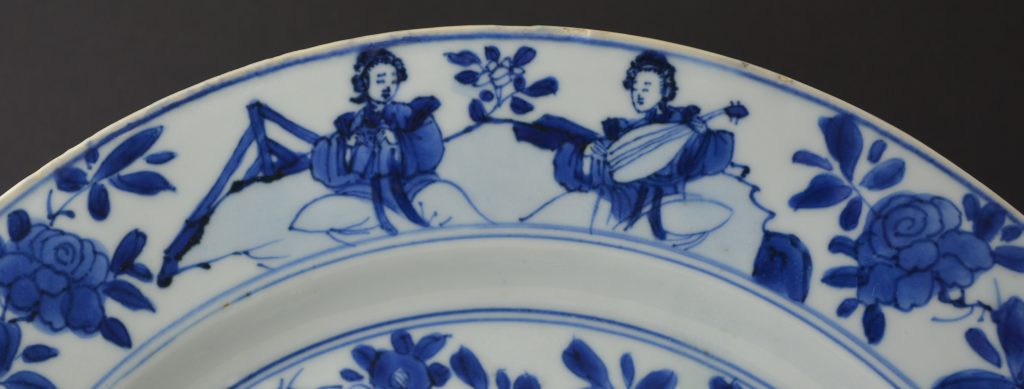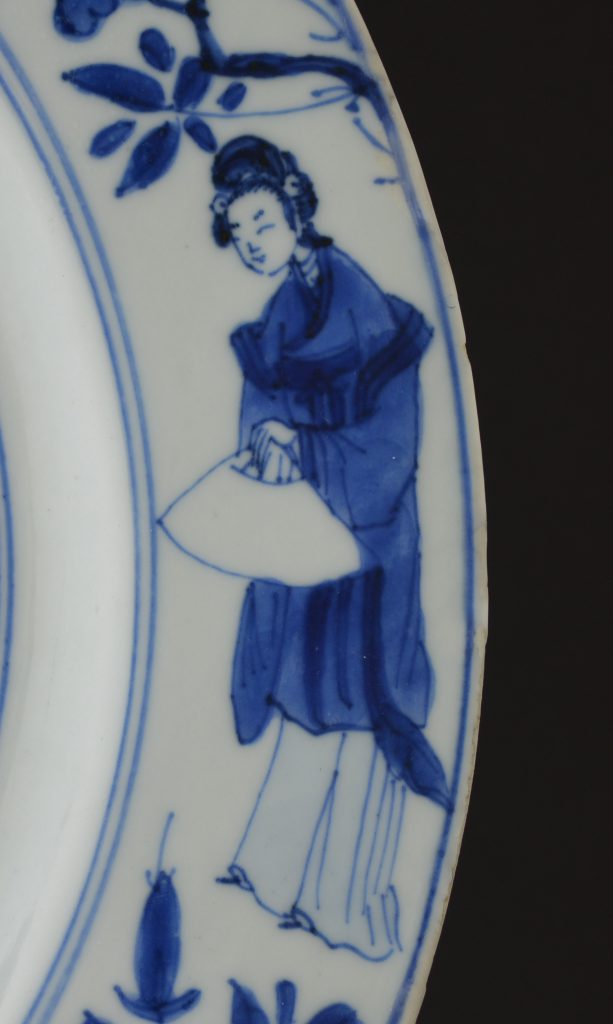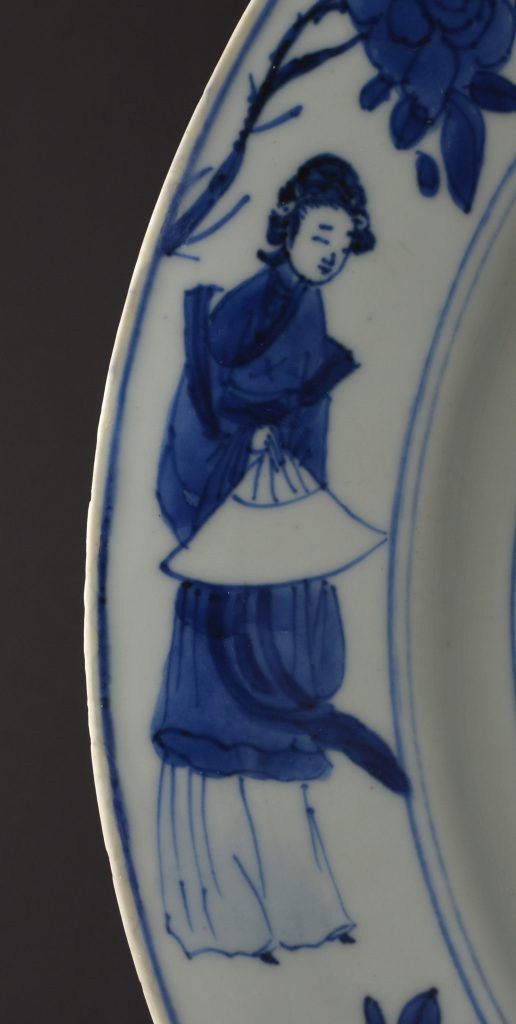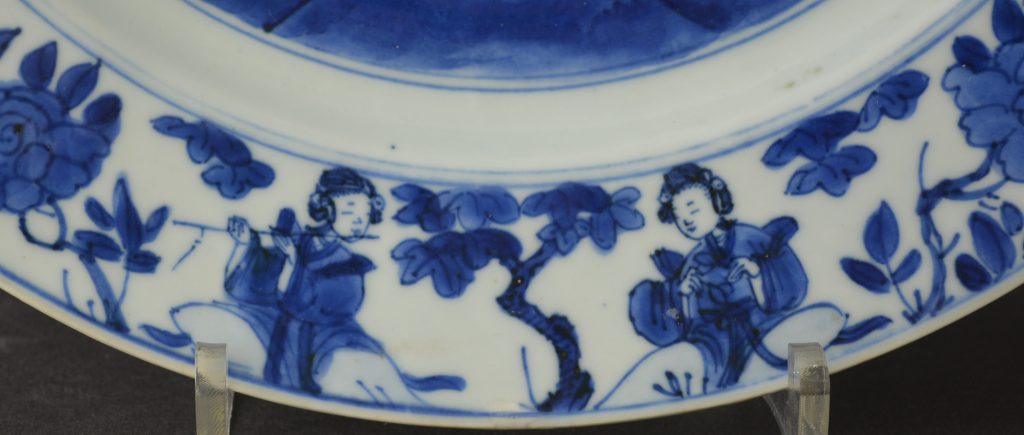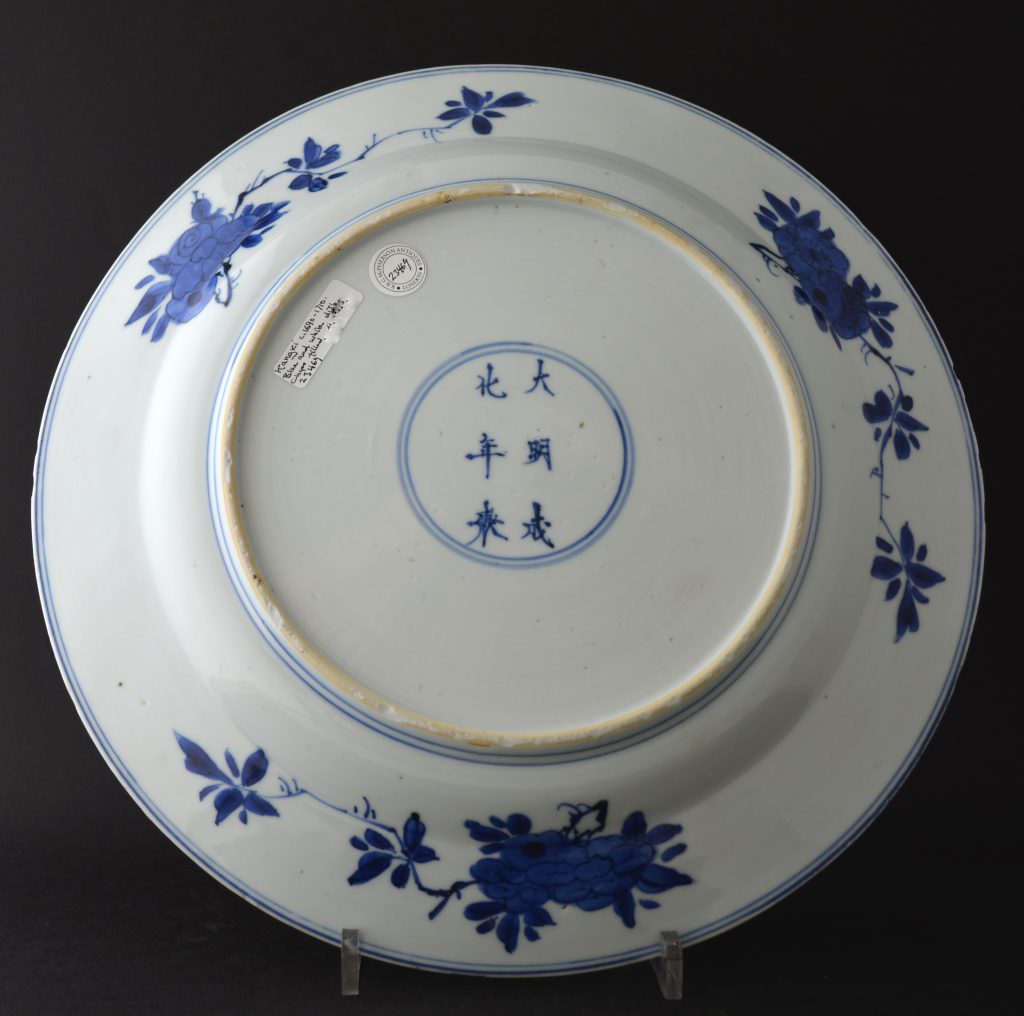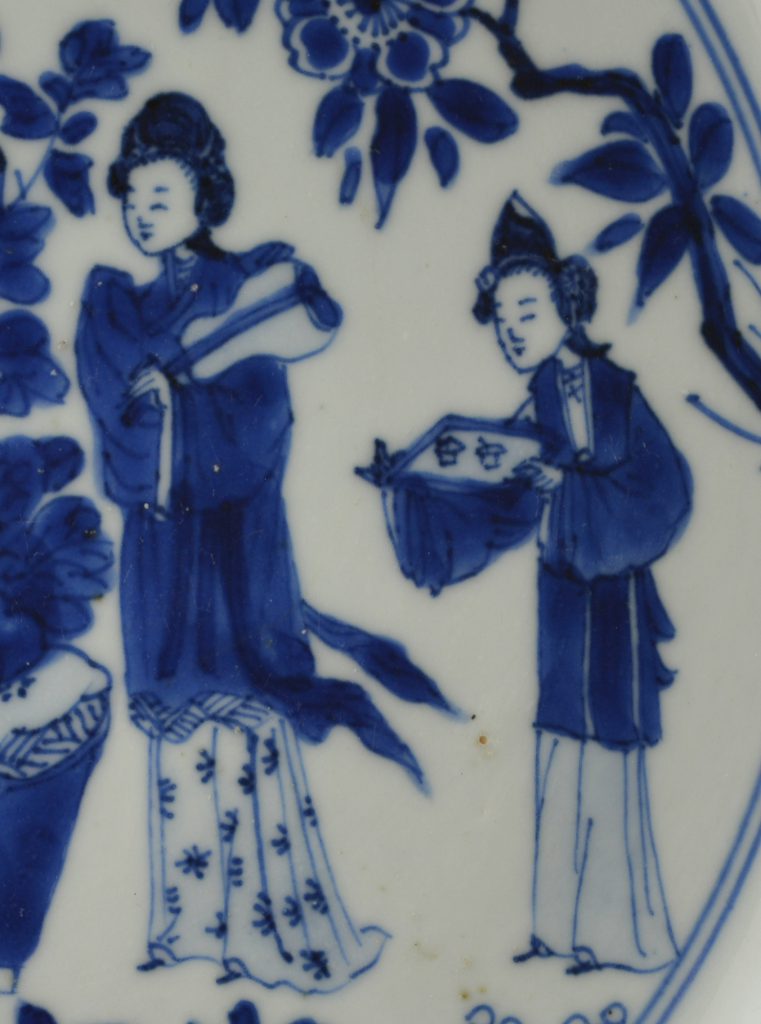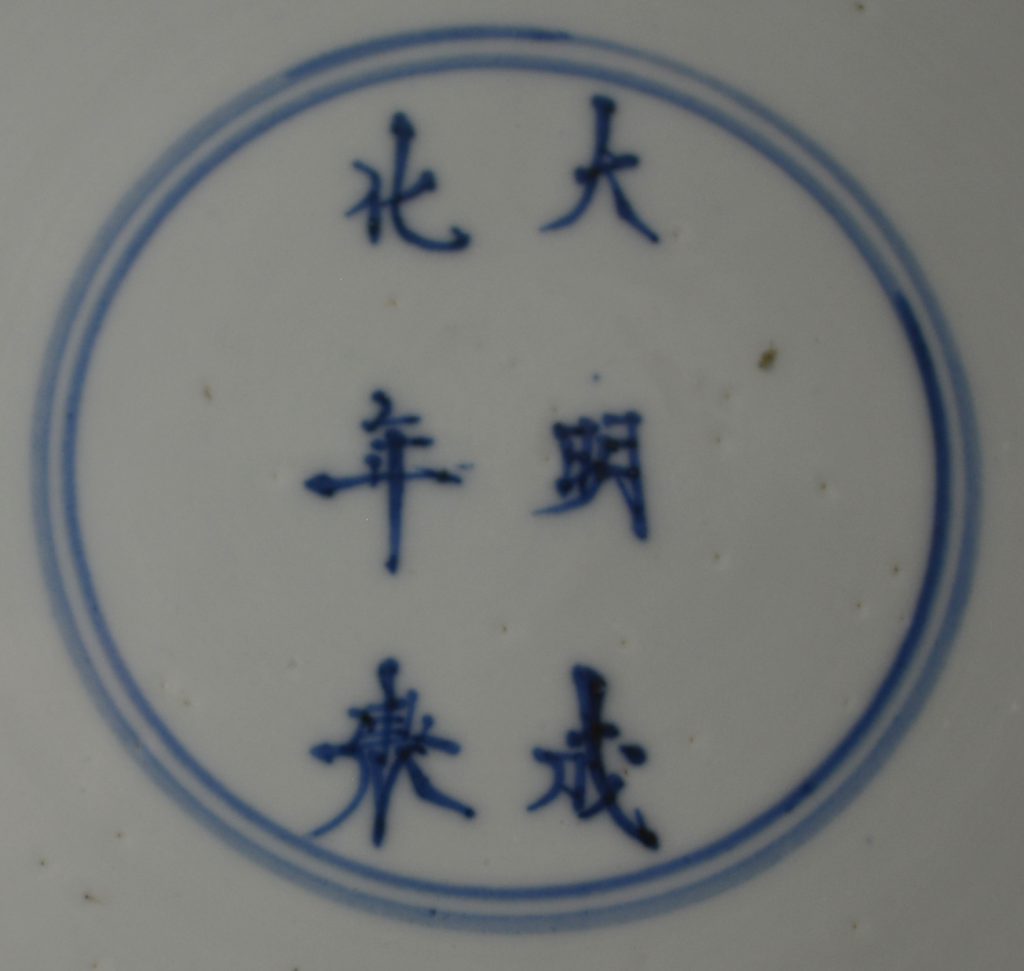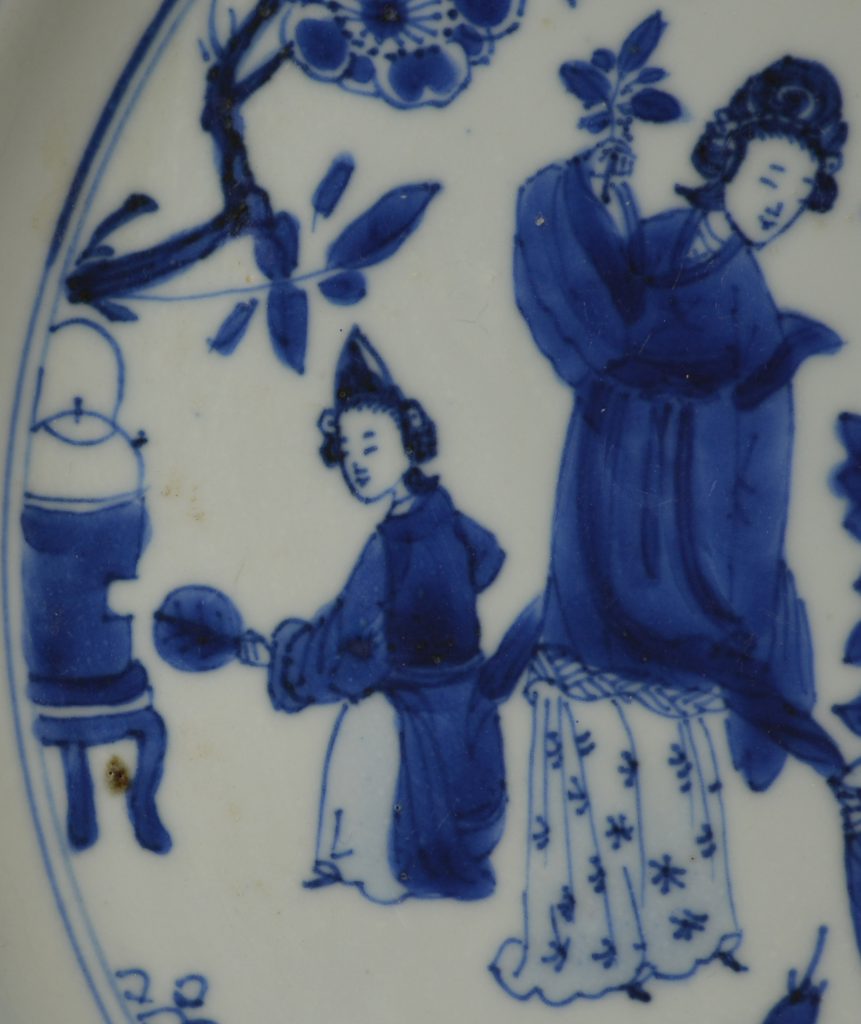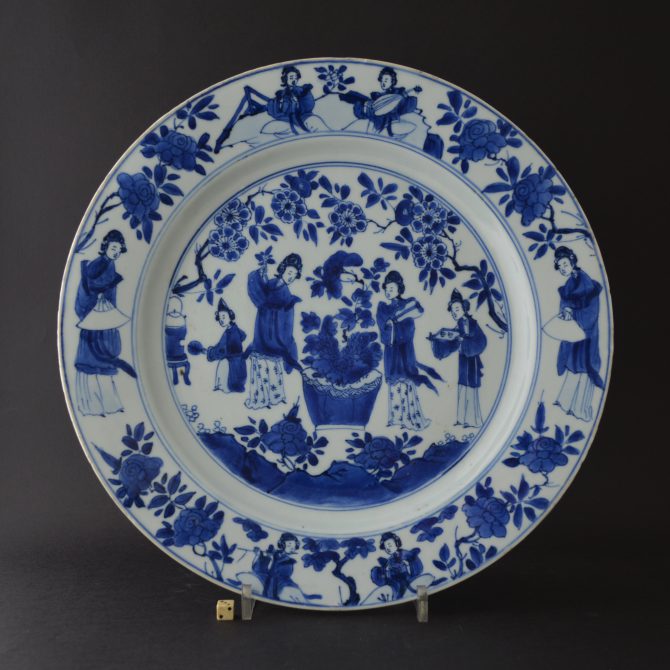
A Large Kangxi Blue and White Porcelain Dish c.1700.
A Kangxi Blue and White porcelain dish decorated with ladies in various pursuits, the base with an apocryphal Ming, Chenghua mark (reigned 1465 to 1487). The central scene is of a busy garden, two elegant ladies are next to a large jardinière of flowering peony. One of the ladies is holding a fan, she is being served tea or warm wine, the other lady holds a small twig with a flower, she is next to an assistant who is warming a kettle on a brazier. The scene is framed by flowering prunus. The border shows two ladies with fans and two pairs of women playing instruments.
SOLD
- Condition
- The rim has numerous small chips. Filled chips, some are just glaze chips ; a flat flake type chip 18 x 5 mm, 12 x 2 mm other smaller filled chips. Minor rim chips and fritting.
- Size
- Diameter : 31.5 cm (12 1/2 inches)
- Provenance
- N/A
- Stock number
- 23469
Information
Apocryphal Marks :
Apocryphal marks are frequently encountered on Chinese porcelain, particularly on Kangxi Blue and White Porcelain but also on Transitional porcelain like the present example. The mark of the Ming Emperor Chenghua who reigned from 1465 to 1487 being by far the most common, other Ming marks include Jiajing (1522-1566) and less frequently Wanli (1573-1620). These marks were not added to the piece to deceive, but more as a sign of reverence to earlier potters of the Ming dynasty (1368-1644). Occasionally they are used on pieces copying Ming Porcelain, these objects were probably made for collectors who could not afford the Ming original. Tianqi is an early period for such an apocryphal mark.
Peony :
Peonies are the most commonly encountered flower on Chinese porcelain, indeed in Chinese art in general. There are two cultivated types of peony commonly depicted, the tree peony Paeonia Suffruicosa (Mudan) and the herbaceous peony P.Lactiflora (Shaoyao). Both have rich exuberant flowers with thin silk like petals but the plants are rather different to each other. The tree peony is not in fact a tree but a deciduous shrub, sometimes rather large and sprawling, it has irregular woody stems. It shares a similar leaf and flower form to the herbaceous peony but they are not close in other ways. The Chinese refer to the peony as the `King of flowers` and are seen as equivalent to the first rank among officials. The flowers are closely associated with royalty because they have been grown in imperial gardens since the Sui dynasty (581-618). The peony is one of the flowers of the four seasons and represents the Spring. It symbolizes wealth and honour, honour in the sense of high rank, having an official position, or high social status.
